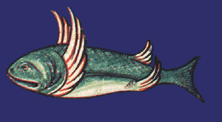How can we aggregate news from multiple sources?
The obvious answer is RSS (see Introduction to RSS – WebReference.com), but is it too complex for those generating news?
Continue reading RSS News
How can we aggregate news from multiple sources?
The obvious answer is RSS (see Introduction to RSS – WebReference.com), but is it too complex for those generating news?
Continue reading RSS News
Where are we headed?
Speculative fiction like Oryx and Crake by Margaret Atwood often shows us emergent possibilities based on features of the present. Atwood’s novel is an eirie close future where bio-engineering and global corporate ghettoization have created a dystopia waiting for the “perfect storm” of a plague.
Continue reading Atwood: Oryx and Crake (and Snowman)
 Architectures, Ideologies & Materials of the Page is a site connected to a conference in 2000 at the University of Saskatchewan on the page. It has good introductory pages on the page over time.
Architectures, Ideologies & Materials of the Page is a site connected to a conference in 2000 at the University of Saskatchewan on the page. It has good introductory pages on the page over time.
Navigating large bodies of text by D. Small is an IBM Systems Journal paper that discusses 3-D navigation of text. A bit old now, but cool.
Why bother with the Arts and Humanities?
There are a number of calls for arts and humanities education emerging from the popular press and famous novellists. Un journaliste dans le pays des deux solitudes : A Challenge to the Social Sciences and Humanities by Graham Fraser of the Toronto Star is an interesting example because he cites a similar call by his father in the 50s. Does anything change?
Continue reading Arts and Humanities
How can we analyze a topic through the web?
twURL: Research Outlet and Integration is a site for a tool that lets people analyze 1000s of URLs from a search. It produces graphs, statistics, and summaries. twURLed World is a site where people can put their summaries on topics. (See the previous blog entry here on Ullman’s The Bug – an example.)
Continue reading twURL – Web Analysis
Salon 21st | The dumbing-down of programming is an essay by Ellen Ullman on Salon on way wizards and interfaces hide the machine from us. It is a meditation on why Linux is so attractive. The interesting part is when Ullman discovers the history of DOS-Basic in the stripping away of Windows.
Continue reading Layers of Computing
Can programming and debugging be made interesting in fiction?
The culture of computing often is hard to represent in other media. Films about hackers always have trouble conveying the excitement of using a terminal (typing and recieving text.) Only with VR could visual representations of information be developed to aide the richness of a movie. But now there are serious novelists weaving computing culture into novels. Powers, Coupland, and Ullman.
These writers are both drawing tropes from computing that they can develop in real (fictional worlds) and commenting on the culture of computing which has had such a hold on our imagination.
Ullman’s The Bug is an example of literature that draws themes from the details of computing (malloc – memory allocation, core dump, Game of Life) rather than mock them.
See Techno-culture ala Ellen Ullman (Update 2003, The Bug) (twURLed World Description) for links.
Continue reading Ellen Ullman, The Bug
Can we offer services off a server for html form fields?
JSpell HTML JavaScript Based Spell Checker is a commercial product that offers spell checking. It is nicely done (try the demo.) The model could be used for interactive tagging or analysis. Hmmm… have to think some more about this.
What can we do with visualization?
evl :: electronic visualization laboratory are pioneers in this field having invented the “cave” and other visualization technologies.